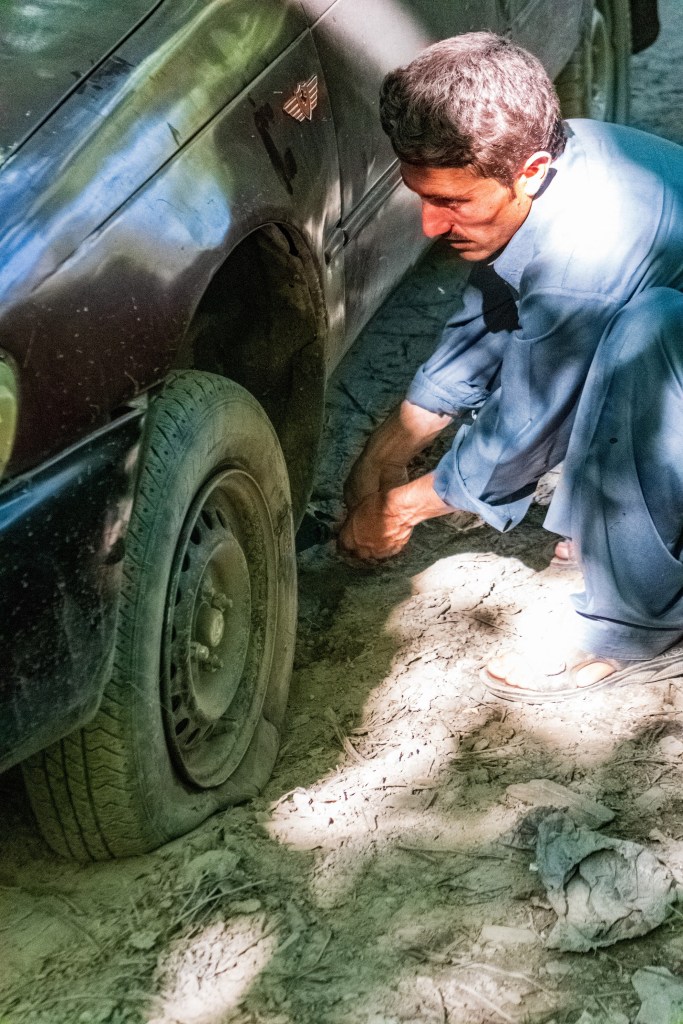
How to Change a Flat Tire No Matter Where You Are
Changing a flat tire guide highlights:
- The easiest way to change a flat tire is to carry a donut or full-size spare as well as a lug nut wrench and portable car jack with you
- Many new cars rely on tire sealant rather than spare tires to deal with flats
- You can still change a flat tire even without a jack, but it’s a bit risky
Whether it’s because of wear and age or a statistically-inevitable nail pierced them, your tires will eventually go flat. If you catch the leak early and/or it’s small enough, you can sometimes patch them up. But that doesn’t really help you if you’re stuck on the side of the road with no air in your tires. However, while you can call roadside assistance, that doesn’t have to be your only solution. No matter where you go, there’s always a way to change your flat tire.
If you have a donut or a full-size spare, you should also have everything you need to change a flat tire

Although they’re getting rarer by the day, some new cars do have at least a donut spare tire. But whether you have that or a full-size spare, that’s enough to replace a flat tire. And if your car has any kind of spare onboard, that usually means it has a lug nut wrench and a portable car jack, too. In a pinch, that’s all you need to change a flat tire on the side of the road. Though if you can, consider bringing some wheel chocks along.
Assuming you can, safely pull over onto some flat ground. Next, put the parking brake/e-brake on and get the spare, jack, and lug nut wrench out. Then, loosen the flat tire’s lug nuts slightly and secure the other wheels using chocks if you have them.
The next step is locating the closest jacking point. Some automakers put labels on the jacks that show where the jacking points are. But if they’re not there, check your owner’s manual. Once you’ve found it, put the jack beneath it and slowly lift the car. Raise it up just enough for the tire to leave the ground. Then, fully remove the lug nuts and change the flat tire for your spare.
After you install the spare, put the lug nuts back on and tighten them in a star pattern. Tighten them fully once you’ve lowered the car back down. And if you haven’t done so already, after putting the rest of your tools away, make sure your spare tire is properly inflated.
If you don’t have a spare, pack some tire sealant
Unfortunately, as noted earlier, most new cars don’t have spare tires. Instead, they have tire sealant kits, aka ‘fix-a-flat.’ Some look like tiny air compressors, while others resemble bottles of spray paint. However, they all work in basically the same way.
You attach the tire sealant nozzle or tube to your tire’s valve and, if it’s a compressor, plug it into your car’s 12-volt outlet. Then, you either press down or flip a switch. This sends compressed air and sealant into the tire, which should hopefully partially re-inflate it and seal any holes. You might see some of the sealant leaking out of the tread, but that’s normal. And once your tire is inflated, slowly drive away to distribute the sealant evenly, checking your pressure after a few miles.
Please note, nowhere in this procedure do you actually change your flat tire. In addition, if the hole is larger than 3/16” across, sealant won’t be enough. Also, it often gums up your tire-pressure sensors, so you’ll have to clean or replace those. And before you go on a long-distance trip, make sure your sealant hasn’t expired.
Furthermore, tire sealant is even more of a temporary solution than putting on a spare tire. Provided it’s in good shape, a spare tire will last long enough to get you home. However, tire sealant is only for getting you to a tire shop, The Drive explains.
Even if you don’t have a jack or ramps, you can still change a flat tire

Let’s say your car has a spare tire, but no jack. Perhaps you bought your car used and the jack was missing. Or it got lost over time and you didn’t have a chance to replace it. Does that mean you can’t change a flat tire? Not necessarily.
First, pull over safely to the side of the road. Second, locate something you can partially drive over that can support your car’s axle. It can be a tree stump, a big log, some rocks, or anything else, but it must be in some soft earth or soil. Once you’ve found the right object, park your car over it so it’s as close to the flat tire as possible. Then, start digging.
Yes, I’m serious, dig out enough dirt so the flat tire can rotate freely. After that, the steps are the same as if you had a jack. Loosen the lug nuts, change the flat tire out for your spare, and re-secure the lug nuts in a star pattern. Once they’re tight, fill in the hole you dug and drive back to the road. Since the tire was up in the tire, you’ll want to tighten the lug nuts again.
It’s worth keeping in mind that this method of changing a flat tire is more dangerous than the others. There’s absolutely no shame in calling roadside assistance rather than risking your safety like this. But if you don’t have service or you’re genuinely desperate, it’s still a viable method. And if you don’t want to risk it, keep a jack in your emergency car tool kit.
Follow more updates from MotorBiscuit on our Facebook page.


